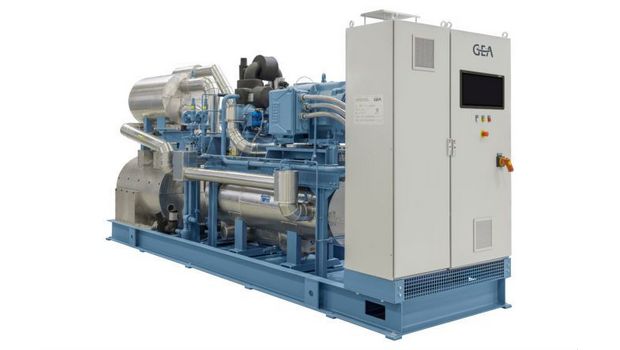How to install an efficient large-scale heat pump for district heating?

A new paper from German compressor manufacturer GEA Refrigeration will be presented at a Sustainable Innovation in Refrigeration Air Conditioning and Heat pumps (SIRACH) Network meeting this Thursday (5 July 2018) on ammonia heat pumps in large district heating projects.
In the paper called ‘large scale heat pumps for high efficiency district heating projects’ Kenneth Hoffmann, GEA’s product manager for heat pumps, explains “Whether the heat pump is for one or 40 megawatt of heating, they all have their bespoke requirement for optimised performance and safe handling of ammonia.”
As Hoffmann goes on to explain in the three case studies – a 5 MW heat pump in Copenhagen, Denmark, a 40 MW heat pump in Malmö, Sweden and a 1 MW heat pump in London, U.K. – using GEA ammonia heat pumps what the different capacities need in different locations.
The 40MW capacity in Malmö was commissioned by E.ON, one of the world’s largest investor-owned electric utility service providers, who put in “four GEA heat pumps each with 10 MW (1 MW = approx. 2,500 homes) heating capacity next to the sewage treatment and waste incinerator plant in the Malmö harbour area,” he writes.
By using the wastewater in the heat pump compared to seawater or ground source water it means a 15% and 10% efficiency boost respectively.
The four heat pumps work in parallel, and have a (Coefficient of performance) COP above 3.50, “so for each 1 kWh electricity used by the heat pump, there is produced 3.5 kWh heat for the city,” he writes.
The 5 MW heat pump, not yet installed, will be used in Copenhagen’s district heating network (HOFOR) to take advantage of both the waste heat from sewage water and seawater, as the sewage water does not deliver enough heat.
“To get the best efficiency out of the heat pump system there is chosen two heat pump systems in parallel each with a two stage compression,” he writes. “On the heating side the flow is also in parallel through the two heat pumps heating the water up to 70 ̊C (52 bar design pressure) and the second one heating the water up to 90 ̊C (63 bar design pressure).”
“Both heat pumps have both high stage and low stage de-superheater, subcoolers and oilcoolers arranged for optimum efficiency,” he adds.
How to make the technology safe in urban areas?
The heat pump in London, U.K. was installed in a densely populated urban area called Islington using the waste heat from a London Underground ventilation shaft to supply cooling capacity for the Tube’s trains as well as providing hot water for nearby buildings.
To prevent any leakage of ammonia, all the heat exchangers are fully welded and plate type, which are more robust than shell and tube heat pumps, use high quality steel and “to avoid boiling the water pressure should always be kept above five bar in the hot water system,” according to Hoffmann in the paper.
Sensors were also fitted along with a highly absorbent material that should take the ammonia out of the air if there was ever a leak. “To absorb the 350 kg in the ammonia heat pump, there is installed 8,000 kg of absorbent material,” writes Hoffmann.
“With these three projects we have seen that ammonia heat pumps can safely be installed in cities, using the waste heat from the citizens to create useful heating at high efficiency and low carbon footprint,” Hoffmann concludes.
